|
Should Australia have a new flag?
Australia is one of the few countries in the
world where a change of the design of the national flag is advocated.
National flags do change over time, usually reflecting a major change in
the country's constitutional arrangements or government. Advocates of
change in Australia believe that another flag design would be more
effective in representing Australia than the current flag. Such
proposals for change are rejected for two broad reasons - the status quo
should endure because the case for change is not accepted and the
national flag is symbolic of the nation and it should be honoured
without alteration. Many supporters of the national flag do not make any
distinction between the flag and the nation - they display the flag to
demonstrate their patriotic support for Australia. Advocates of change
claim to be equally patriotic, they only want to have a different flag
to use.
The issue of a potential change is one that
Flags Australia takes a strong interest in but, reflecting the mix of
personal views of its members and a desire to be non-political, Flags
Australia does not, as an entity, have an opinion - it neither supports a
change of flag nor does it oppose such a change. It is however
considered appropriate that Flags Australia provides expertise and a
forum for debate and it fully reports both proposals for change and the
views of advocates for the current flag. Flags Australia strives for
balance in its coverage of the issue but does not resile from the view
that the debate should be conducted with maximum respect and the
arguments on both sides should be soundly based on correct facts about
the history of flags in Australia and good design principles as they
apply to flags. Emotions and politics legitimately play a role in
connection with flags and ultimately the Australian political processes
will determine the course of the flag debate.
The main arguments advanced in respect of a new
flag, for and against, are summarised below. The text seeks to clearly
express in summary form the opinions of each side of the flag debate,
though neither text represents the views of Flags Australia. The texts
have not been reviewed or authorised by either ANFA or Ausflag.
Retain the current Australian Flag
- The Australian National Flag has
served Australia well for over 100 years as the chief national symbol by
law, custom and tradition - there are no compelling reasons why it
should change.
- The current flag is already well known
internationally and it its distinctive and attractive design is
effective in promoting Australian identity overseas.
- The current flag was chosen in a unique
and democratic public competition in 1901, judged to be the best design
from 32,823 entries, with five different persons independently
submitting the same design. The story of the 14 year-old Ivor Evans is
considered inspirational, especially in the claim that he saw the
Southern Cross as symbolic of Dante's four virtues of justice,
prudence, temperance and fortitude.
- Australia's soldiers, sailors and
airmen valiantly fought under the current flag during two World Wars for
our freedom and the spirit of the ANZACs - therefore the flag should
not change.
- The flag of "Stars and Crosses" is
considered to be a thing of beauty, colour, design, function and meaning
- it represents Australia's history and values:
- The Union Jack - The three crosses;
St George, St Andrew and St Patrick represent our history and the
British contributions of our language, literature, fine arts and sports,
constitutional monarchy, parliamentary democracy, the rule of law and
freedom of speech.
- The Commonwealth Star - represents our national unity - six points for the states and one point for the territories.
- The Southern Cross - The
constellation indicates the geography of our place in the southern
hemisphere. The stars of the Southern Cross shone above the Australian
continent when the first Aboriginal people arrived and they relate to
various Aboriginal legends.
- Together, the elements combine to
interweave geography and history into a unique design that symbolises
our future aspirations for Australia.
- The popular support for the Australian
flag is demonstrated by its widespread use - flying from private
buildings, as a hand-waver on Anzac Day and at other public events and
as a car sticker or lapel pin. The large number of members of the
Australian National Flag Association (ANFA) is specific proof of the
strength of public support for "our flag". ANFA members and the public
show their support for the flag by attending annual Australian National
Flag Day ceremonies each 3rd September.
- The flag is a continuing focus of our
national pride, whilst other flags such as Eureka are of only historical
interest. The Australian flag has flown during most of the significant
events in Australia's history, particularly at the Olympic Games of
Melbourne and Sydney and in celebration of many other great sporting
achievements. Many major events - either the celebration of an
achievement or a public tragedy involve the national flag in some way
and every such usage reinforces the need for the flag to be honoured
unchanged.
- The flag is for all Australians
representing people from all backgrounds who support Australia's future,
including migrants and Aboriginal people. It is the right and privilege
of all Australians to fly the national flag and display it with pride
and dignity in accord with the rules of flag etiquette and protocol.
- The flag should not be changed without
a referendum that would enable all Australians to vote on whether they
would approve any change. This was the intended effect of the amendments
to the Flags Act made in 1998, though some argue that the current flag
should be included in the Constitution to ensure the effectiveness on
such a prohibition on change without a majority vote.
- Supporters of the current flag fear a
change occurring, as they expect that any new design would be imposed by
a government responding to a vocal minority and lobby groups and that
such a design would not be capable of achieving popular acceptance, let
alone one that could be as inspiring as the current flag.
- Newspaper phone-in polls (Sydney Morning Herald
1998 and 1999) have been conducted which show the current flag being
the most favoured when compared to various Ausflag designs.
- Ausflag and others promoting a flag
change are elitists who are closely linked to the republican movement.
If the republic had been successful in 1999, then a change of flag was
considered to be inevitable. The referendum on the republic was rejected
by ordinary Australians who were not fooled by the pro-republic
propaganda from the media and politicians and the vote should be
regarded as supporting the view that the Australian flag also should not
change.
- In 2002 ANFA introduced the Australian National Flag Promise
to encourage youth to associate the Australian National Flag with the
appreciation and acceptance of the principles of Australian citizenship:
| |
I promise allegiance to Australia and our national flag of "Stars and Crosses"; |
| |
to serve my country and all its people faithfully and |
| |
to uphold Australia's laws, values and traditions |
| |
to the best of my ability. |
Further information can be obtained from the website of the Australian National Flag Association.
Australia Needs a New National Flag
There have been a number of proposals to change
the design of the national flag. In addition to the high profile Ausflag
Limited there are also a number of individuals who have designed and
promoted their own personal vision for a new flag. Set out below is an
amalgam of the various arguments put forward as to why Australia should
have a new flag.
- It is accepted that the Australian National
Flag has served Australia for over 100 years and through usage has
become well known internationally. However, it is time for it to be
gracefully retired and a more effective design adopted. There is no
disrespect to the current flag in advocating a change; the current flag
would continue to be honoured for its role in Australia's development as
a nation.
- Ausflag and the designers of a new flag are
as patriotic and proud of Australia and its achievements as the
advocates of retention of the current flag claim. They believe that a
new flag would be flown and used to demonstrate the same emotions and
national pride as occurs currently. A flag is a symbolic representation
of the nation and its people - these would not be changed by a new flag.
What is sought is a new design that can help reinforce national pride
with a strong and inspiring design that is clearly and distinctively
recognisable as Australian.
- Ausflag's stated objective is "to secure
the popular support of the Australian people for the adoption of a
truly Australian flag, a flag which clearly and unequivocally proclaims
our identity to other nations, a flag which is internationally
recognisable and not confusing to other nations, and a flag which unites
the Australian nation in all its diversity."
- A new flag design can better reflect the
values and aspirations of 21st Century Australia than the current flag
which reflects through its design and its history a long past Australian
society, when it was an integral part of the former British Empire. The
debate is not about being anti-British. It is, simply, pro-Australian.
- The current Australian flag is a British Blue
Ensign with the addition of two emblems. The pattern of adding a badge
to the fly of a British Blue Ensign was established in 1865 for use in
all colonies within the British Empire. Each colonial governor selected a
design for a badge to add to the colonial flag. Colonies were
prohibited by the British Admiralty from having a distinctive flag in
any other format. When Australia adopted its flag in 1903 the only
variation to this colonial flag pattern was the addition of a second
badge, the Federal Star. When the flag design competition was held in
1901, the judges knew that the only flag that would be acceptable to the
British authorities was one that was a British Blue Ensign with a
locally designed badge. Whilst the judges' decision stretched the
colonial flag rules by using two badges, there was no option but to use a
Union Jack in the top left corner of a blue flag (and a red version for
use by shipping).
- Due to the gradual process by which
independence was achieved, Australia never had the opportunity to raise a
new flag at an Independence Day ceremony, symbolically representing the
"coming of age" of the nation. Therefore, like Canada which changed its
flag in 1965 (whilst retaining HM Queen Elizabeth II as Queen of
Canada), Australia needs to reflect its current status as a fully
independent country, respectful of its British history, but projecting
through its flag an authentic and modern Australian identity.
- Whilst most independent members of the
Commonwealth have distinctive flags, Australia is one of only four
independent nations that retain the Union Jack in their flag. New
Zealand also uses the Southern Cross (with red stars), whilst Fiji and
Tuvalu changed the colour of their flags to light blue upon
independence. A British ensign is also used by Cook Islands, Niue,
Manitoba, Ontario, Hawaii and 15 British dependent territories.
Internationally, Australia's continued use of a flag that includes the
Union Jack is ambiguous - is Australia still a British colony?
- A national flag is a powerful symbol of the
nation and it is important that the flag be truly representative of all
Australians. Whilst ANFA claims that the "Stars and Crosses" represent
Australia's values and legal traditions, many see only the British Union
Jack and associate that part of the flag as representing only the
Anglo-Celtic origins of what is now only one part of our multi-cultural
society. Australian values go beyond the limited list of the rule of
law, parliamentary democracy and the like, that is attributed to British
heritage.
- Some advocates of change believe that the
Australian national flag should include some acknowledgement of
Australia's indigenous people, either to acknowledge their prior
ownership of the land or to promote reconciliation.
- The widespread use of the Boxing
Kangaroo flag and other sports flags demonstrates the inability of the
current national flag to fully reflect the national pride and
identification needs of ordinary Australians.
- The design of the current Australian
National Flag is criticised for lacking any distinctive Australian
design elements - the Union Jack in the top left corner ("the canton")
indicates, in heraldry, that the United Kingdom flag is superior to the
other design elements; the Southern Cross is not unique to Australia -
it appears on a number of other national flags of countries in the
southern hemisphere; and the Commonwealth Star is meaningless to
foreigners, unless they are explicitly educated about the meaning of the
elements of the Australian flag. Many other countries include a large
star on their flag.
- The debate about a change of flag is
separate and distinct from proposals to change Australia from a
constitutional monarchy to a republic. It is acknowledged that many of
the arguments are similar and, if Australia were to become a republic,
that change could be symbolised by a change of flag, but it would be
equally valid to affirm the limited impact of a constitutional change by
leaving the Australian flag unchanged. Australia, like Canada and 11
other Commonwealth countries could change the flag whilst retaining the
Queen as Head of State.
- The argument that the current flag
cannot be changed because Australia's defence forces fought under the
current flag during two World Wars is considered to be a furphy.
Australia's soldiers, sailors and airmen fought to defend their nation
and to serve their country in the various wars in which Australia has
participated - they did not "fight for the flag" but did fight for what
the flag represents. A change of flag does not diminish their service.
Canadian forces were a major part of the D-Day landings in 1944 and
today the current Canadian flag is used to represent their
participation, not the Canadian red ensign used during World War II. No
accusations of disrespect to ex-servicemen were made when the flags used
by the Royal Australian Navy and Royal Australian Air Force during
World War II were changed.
- Advocates of change accept that the
national flag should not be changed without clear evidence of widespread
public support for a change. If necessary, this public support can be
tested by a referendum or plebiscite, though the way in which such a
public vote is conducted should be such that the public's opinions are
genuinely identified, not using a referendum as a device for entrenching
the current flag, which was the intended effect of the amendments to
the Flags Act made in 1998.
- Advocates of change believe that there is a
majority public opinion in favour of a change of flag, though there
currently is no single new design that is clearly favoured.
Change-advocates cannot be dismissed as a vocal minority or mere lobby
groups. It is accepted that widespread popular acceptance for a new
flag is a necessary prerequisite for change. Ausflag and many
independent designers have strived to create and popularise an
alternative flag design that has a superior design to the current flag
and is capable of being inspirational.
- Debate about the flag and its future is
an example of the healthy debate in a democracy that ensures the
continued relevance of the national symbols.
Further information can be obtained from the website of Ausflag Limited
Ausflag has regularly promoted alternative flag
designs including the holding of public design competitions. A number of
the flags that Ausflag has promoted are:
A number of other Australians have proposed new
designs for an Australian national flag. A selection of these designs,
most of which have been featured in Crux Australis, is listed
below. More information on many of the more recent flag proposals can
also be found on the web sites of their designers.
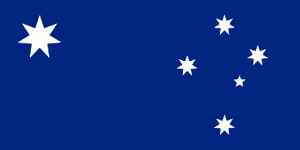 |
|
Republican Socialist League 1956 - the first proposal for a new flag - remove the Union Jack and replace wit the Commonwealth Star |
| |
|
|
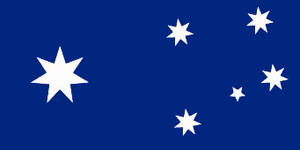 |
|
Australasian Post 1968 -
remove the Union Jack and rearrange the remaining elements. Used by
Australian cricket team in Test Match tour of England in 1997. |
| |
|
|
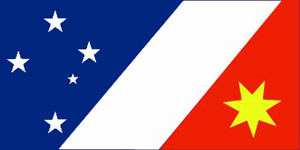 |
|
Richard Bates 1971 - winner of Australian National Flag Quest run by the Bulletin magazine. |
| |
|
|
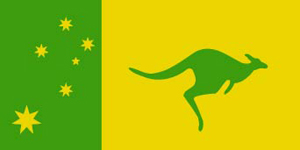 |
|
Athol Kelly 1979 - All Australian Flag |
| |
|
|
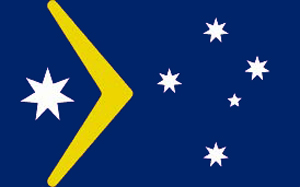 |
|
Ralph Kelly 1982 - a weekly finalist in the Daily Telegraph flag design competition. |
| |
|
|
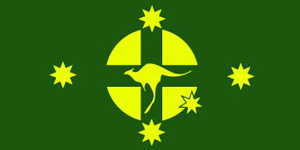 |
|
John Williamson 1983 - Fair Dinkum Flag |
| |
|
|
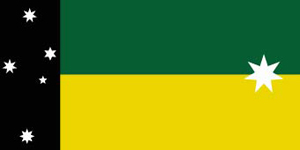 |
|
Alan Wright 1983 - Aussie Push for 88 |
| |
|
|
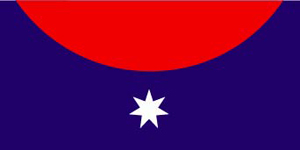 |
|
Friedensreich Hundertwasser 1986 - Down Under flag - Uluru positioned to show "Australia holding the earth from down under". |
| |
|
|
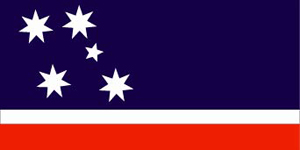 |
|
Tony Burton 1984 - Southern Cross Flag |
| |
|
|
 |
|
Geoff Coulin 1989 - Wattle Flag |
| |
|
|
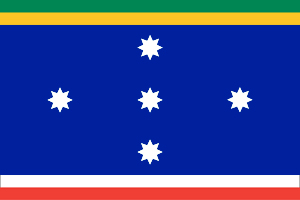 |
|
Charles and Ralph Bartlett 1992 - Southern Cross with national colours. |
| |
|
|
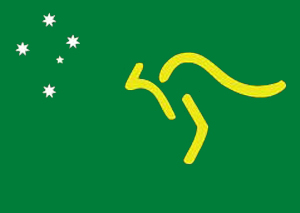 |
|
John Bartholomew 1992 - winning design in Adelaide Advertiser flag competition. |
| |
|
|
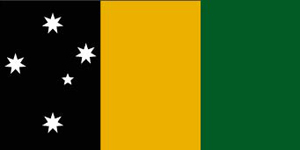 |
|
David Couzens 1993 - equal first winning design in Channel 9 A Current Affair flag competition. |
| |
|
|
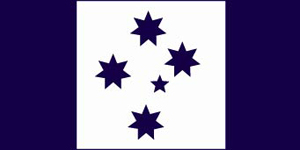 |
|
Tony Burton 1993 - equal first winning design in Channel 9 A Current Affair flag competition and also third place in Ausflag 1993 flag design competition. |
| |
|
|
 |
|
George Poulos 1993 - the rising sun of the ANZACs is the primary icon of Australia |
| |
|
|
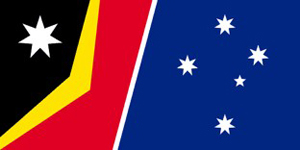 |
|
Brendan Jones 1995 - Reconciliation Flag |
| |
|
|
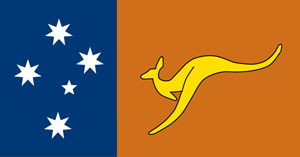 |
|
John Williamson 1995 - True Blue flag |
| |
|
|
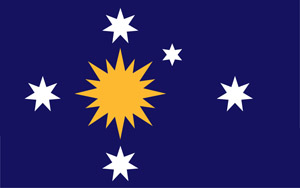 |
|
James Parbery 1996 - Originally called A flag for us all, relaunched 2008 as the All Australian Flag. |
| |
|
|
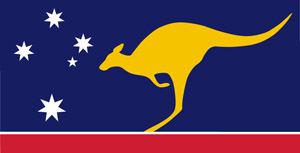 |
|
Yahoo Serious 1997 - All Australian Flag |
| |
|
|
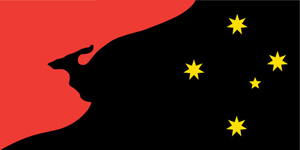 |
|
Russell Kennedy 1997 - Reconciliation Flag |
| |
|
|
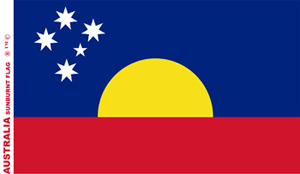 |
|
Stephen Berry 1998 - The Sunburnt Flag |
| |
|
|
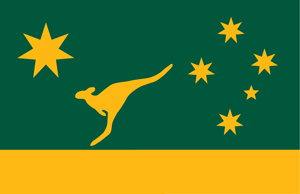 |
|
Peter Markwick 1999 - combining the Southern Cross and kangaroo in green and gold. |
| |
|
|
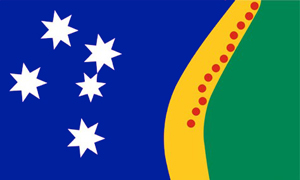 |
|
Fred Rieben 2004 - FlagOz actively promotes its Southern Cross and Boomerang flag. |
| |
|
|
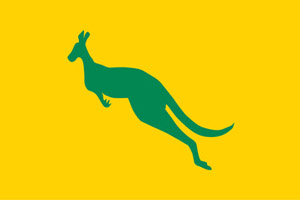 |
|
Wendy Davies 2009 - A leaping kangaroo symbolises the legends and totemic beliefs of Aboriginal Australians and the spirit of the nation. |
| |
|
|
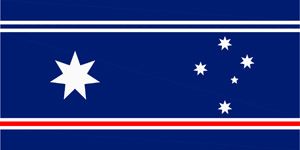 |
|
Michael Iacuone 2012 - Australia Blue flag - the stripes express the geographic width of the continent, red for the land and blue for the rivers. |
| |
|
|
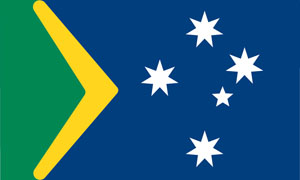 |
|
Ralph Kelly 2012 - An update of a 1982 design - removing Commonwealth Star as irrelevant and creating a "green and gold" element. |
| |
|
|
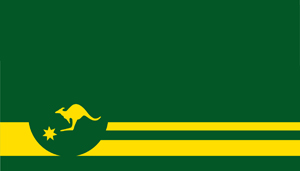 |
|
Dr Bob Bradley 2013 - Sun Arising flag - green with gold stripes and the classic kangaroo and a Commonwealth Star on a disc evocative of the rising sun. |
|
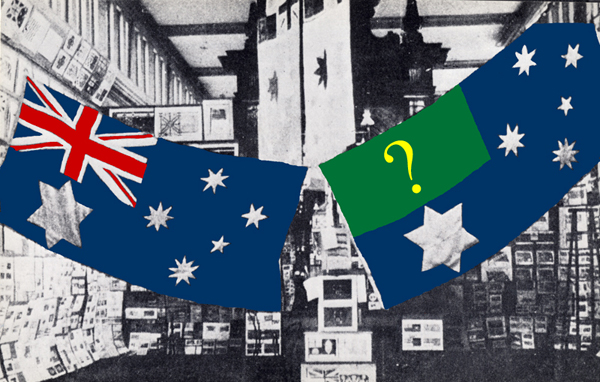
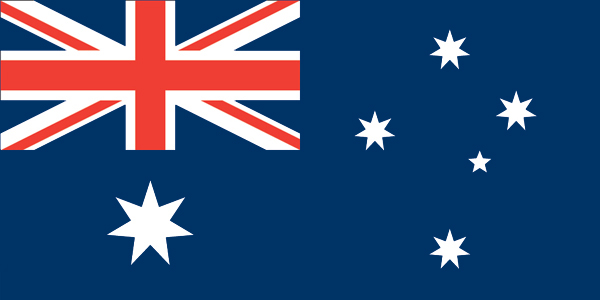
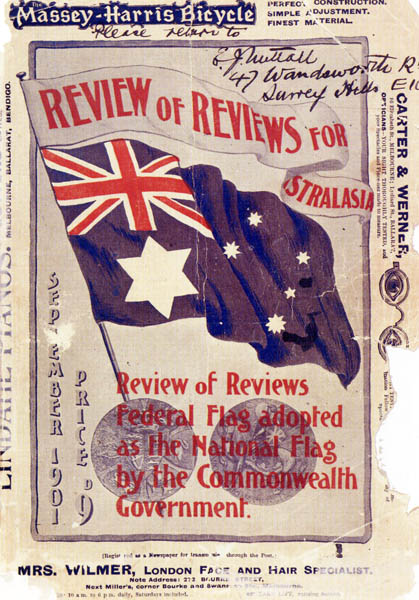
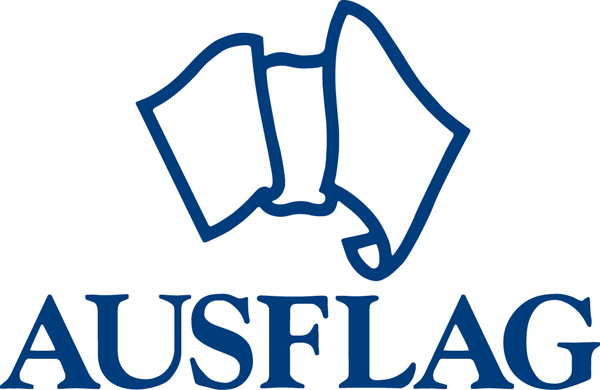

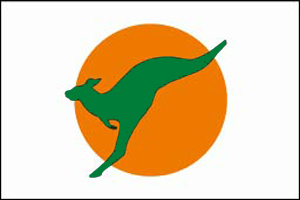
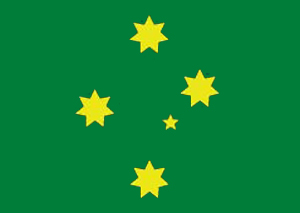
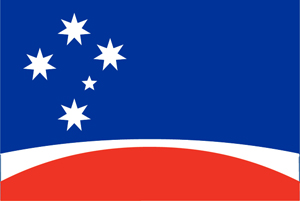
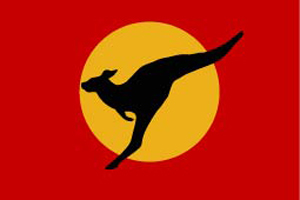
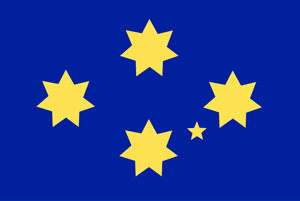
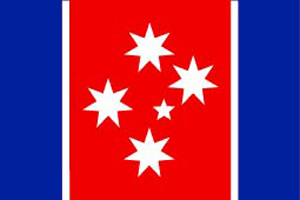
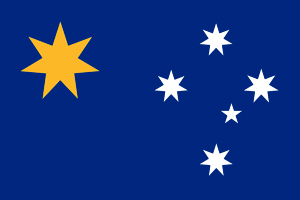
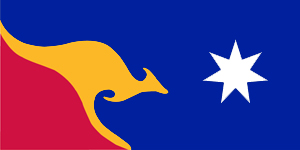



























No comments:
Post a Comment